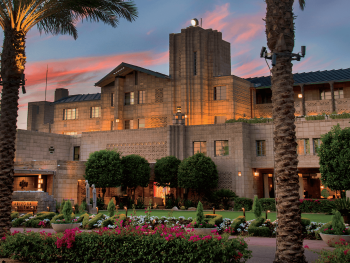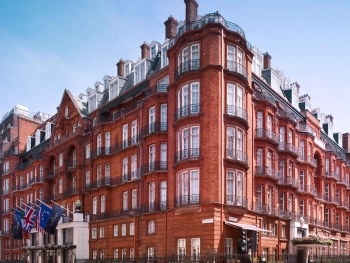The Rise and Fall of a Grand New York Hotel
The Martinique Hotel, located at the corner of Broadway and 32nd Street in New York City, boasts a rich and fascinating history. Built in three phases between 1897 and 1911, the hotel rose to prominence as a luxurious destination during the peak of New York's theater scene.
Following the Theater District Northward
Developer William R.H. Martin, recognizing the northward shift of Broadway's theater district towards 39th Street with the construction of the Metropolitan Opera House in 1883, decided to capitalize on this trend. He hired the renowned architect Henry Janeway Hardenbergh, famed for landmarks like the Dakota Apartments and the original Waldorf Astoria, to design the Martinique.
Hardenbergh envisioned the Martinique in the French Renaissance style, maximizing its openness to highlight the grand mansard roof with its towers and ornate dormers. The facade, clad in glazed brick, terracotta, and limestone, reflected Hardenbergh's philosophy of designing for longevity. Stonework, balconies, and prominent cartouches adorned all three main sides of the building.
A Prime Location in the Bustling City
The expanded Martinique opened in 1910, boasting a staggering 600 rooms. Its location was unbeatable - within walking distance of the newly built Pennsylvania Station, Macy's on Herald Square, and the PATH commuter train terminus. Across the street stood the massive Gimbels department store, another architectural marvel offering convenient access to the subway system.
A 1910 Martinique brochure paints a vivid picture of the hotel's allure. Situated at the heart of the city's shopping district and surrounded by theaters, the Martinique offered luxurious amenities like the "Gentlemen's Broadway Caf?" with its Italian marble walls and "Pompeiian panels," and the even more elegant Louis XVI dining room, renowned for its Circassian walnut wainscoting and gold silk tapestries. The brochure boasted of exceptional cuisine, top-notch service, and unparalleled views due to the hotel's height. Room rates ranged from $3.50 for a room with a bath to $6.00 and up for a suite with a parlor.
The Martinique also witnessed a significant moment in sporting history. On April 10, 1916, the Professional Golf Association of America was founded within the hotel's walls.
A Change in Fortune
However, the tide began to turn for the Martinique. As the theater district moved further north towards Times Square and upscale stores migrated to Fifth Avenue, the Martinique's clientele dwindled. By the 1970s and 80s, the hotel had fallen into disrepair and became a housing facility for homeless families. Years of neglect and challenging living conditions plagued the hotel.
Rebirth and Recognition
In 1989, the city acquired the Martinique and sought to revitalize it. Harold Thurman, owner of the Hilton Hotel at JFK Airport, took over the lease and embarked on a complete renovation. Recognizing the hotel's architectural significance, the New York City Landmarks Preservation Commission designated the Martinique a landmark in 1998, ensuring the preservation of its beautiful Beaux-Arts facade.
A New Chapter
Today, the Martinique, under the Radisson flag, has transformed back into a stunning hotel. It stands proudly in Midtown Manhattan, just blocks away from iconic landmarks, offering guests a chance to experience a piece of New York City's history while enjoying modern amenities and classic comfort. The hotel's checkered past adds a layer of intrigue to its current incarnation, serving as a testament to the city's constant evolution.


